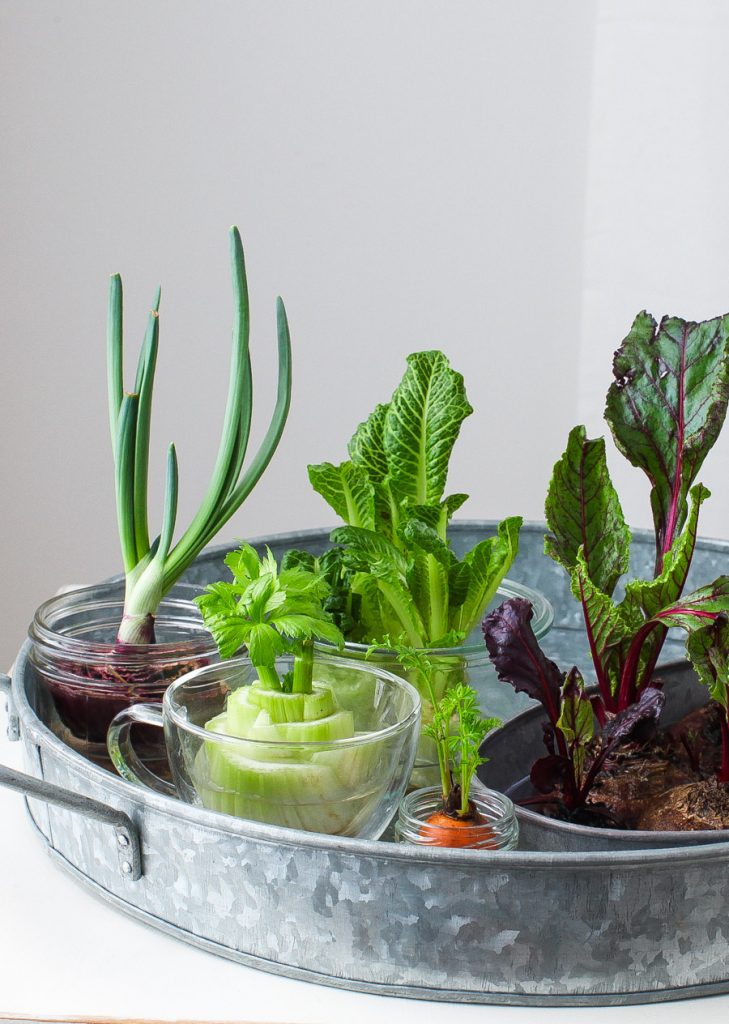Grow Veggies From Kitchen Scraps: Easy Guide

Have you ever felt a pang of guilt tossing out the ends of your celery or the base of your lettuce? What if I told you that you could transform those kitchen scraps into a thriving garden? Welcome to the fascinating world of food scrap gardening! Imagine turning your trash into a treasure trove of fresh, homegrown vegetables. Not only is this a fantastic way to reduce waste and save money, but it also offers a deeply satisfying sense of accomplishment. So, are you ready to become a kitchen garden maestro? Let's dive in and explore how to grow vegetables from kitchen scraps!
The Magic of Plant Propagation
Plant propagation is the art of creating new plants from existing ones. When it comes to regrowing vegetables from kitchen scraps, we're essentially harnessing the power of plants to regenerate. This isn't just a fun experiment; it's a step towards a more sustainable, zero-waste lifestyle.
Why Regrow Vegetables from Scraps?
- Zero Waste: Food scrap gardening helps reduce organic waste sent to landfills.
- Cost-Effective: Growing your own vegetables saves money on groceries.
- Fresh Produce: Enjoy the freshest, most flavorful veggies right from your kitchen garden.
- Educational: It's a fantastic way to teach kids about plant life cycles and sustainability.
Getting Started: What You'll Need
Before we dive into the specifics, let's gather our tools. You'll need:
- Kitchen scraps (more on which ones later)
- Water
- Containers (glass jars, bowls, or pots)
- Soil (for later transplanting)
- Sunlight
- Patience and a green thumb!
How to Grow Vegetables from Kitchen Scraps
1. Lettuce and Cabbage

Place the base of a lettuce or cabbage head in a shallow bowl of water, ensuring the roots are submerged. Change the water every couple of days. Within a week, you'll see new leaves sprouting from the center. Once the plant is well-established, transplant it into soil.
2. Celery
Cut the base off a celery stalk and place it in a bowl of warm water. Keep the water level consistent, and within a week, you'll see new growth. Transplant into soil once the new celery stalks are about an inch tall.
3. Green Onions
This is one of the easiest vegetables to regrow. Simply place the white ends with roots attached in a glass of water. Change the water every few days, and within a week, you'll have a fresh supply of green onions.
4. Garlic
Plant individual garlic cloves, root end down, in a pot of soil. Keep the soil moist and in a sunny spot. Green shoots will sprout, and you can harvest the garlic greens or wait for a new bulb to form.
5. Potatoes
Cut potatoes with eyes into 2-inch pieces and let them dry overnight. Plant them in soil, eyes facing up, and cover with about 4 inches of soil. Water regularly, and in a few weeks, you'll have new potato plants.
6. Ginger
Soak a piece of ginger root in warm water overnight. Plant it in a pot of soil, keeping it moist and in a spot with indirect sunlight. New shoots and roots will form, and you can harvest pieces of the ginger as needed.
Tips for Successful Food Scrap Gardening
- Light: Most vegetables need plenty of sunlight. Place your containers near a window or in a sunny spot.
- Water: Keep the water fresh and the soil moist. Overwatering can lead to rot, while underwatering can stunt growth.
- Patience: Regrowing vegetables takes time. Don't be discouraged if you don't see immediate results.
The Science Behind Plant Propagation
Plant propagation relies on the plant's natural ability to regenerate. When you place a cutting or root in water, it stimulates cell division and growth. This process, known as vegetative propagation, allows plants to reproduce asexually, creating genetically identical offspring.
For a deeper dive into the science, check out this article on plant propagation from Gardeners' World.
Embracing the Zero-Waste Lifestyle
Food scrap gardening is just one piece of the zero-waste puzzle. By reducing organic waste, we're taking a step towards a more sustainable future. Imagine if every household turned their kitchen scraps into lush gardens. The impact would be monumental.
For more zero-waste tips, visit the Zero Waste Home website.
Conclusion: Your Kitchen Garden Awaits
Growing vegetables from kitchen scraps is more than just a fun experiment; it's a journey towards sustainability and self-sufficiency. With a little patience and care, you can transform your food waste into a thriving kitchen garden. So, why not give it a try? Your taste buds, wallet, and the planet will thank you.
Happy gardening!
FAQs
Can I regrow vegetables from any kitchen scraps?
- While many vegetables can be regrown from scraps, not all are suitable. Stick to the ones mentioned in this guide for the best results.
How long does it take to see new growth?
- The time varies depending on the vegetable. Some, like green onions, show growth within days, while others, like potatoes, can take weeks.
What if my vegetable scraps start to rot?
- If your scraps start to rot, it's likely due to too much water or not enough air circulation. Make sure to change the water regularly and keep the container in a well-ventilated area.
Can I regrow vegetables indefinitely?
- While you can regrow vegetables multiple times, the quality may decrease with each generation. It's best to start with fresh scraps periodically.
What other plants can I grow from kitchen scraps?
- Besides vegetables, you can also regrow herbs like basil and mint, and even fruits like pineapple and avocado from scraps.

Embarking on this food scrap gardening adventure is not just about growing vegetables; it's about cultivating a greener, more sustainable lifestyle. So, roll up your sleeves, grab those kitchen scraps, and let's get growing!
0 Response to "Grow Veggies From Kitchen Scraps: Easy Guide"
Post a Comment